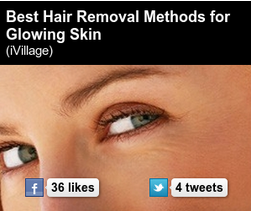
Display is dead, so they say. It’s all over the news. Content is the new kid in town and it’s a great way to get consumers to trust your brand. That’s great and all, but display advertising has what content approaches often lack: scale.
That’s why beauty brand Remington for the launch of its newest hair-removal product, decided to mix the approaches.
Remington already had its Remington Ready website, which carries beauty and fashion content like how-to tips, tools, trends, and tricks of the trade. The company has been using the site to provide useful information, while at the same time positioning the brand as a thought-leader in all things beauty. Remington relied on SEO and a Facebook page to drive traffic to the content.
The company tapped OneSpot technology to grab an RSS feed of the Remington Ready website and automatically turn each beauty and fashion article into a display ad, which is then placed on relevant publisher sites across the Web.
But driving traffic is only the first step of Remington’s content campaign. The next step involves “sequencing” content and product offers to drive sales of the iLight Pro product. After a user engages with the Remington content, the user is retargeted with ads from third party articles, which focus on the product category.
Remington is seeing what it considers good results from this initiative. The iLight Pro third party media has consistently garnered a 0.48 percent click-through rate and the owned media is seeing a 0.35 percent click through rate on average. These numbers are substantially higher than the 0.1 percent industry average.
More in Marketing

How brands shifted marketing and media strategies through year of tariffs
Marketers share how they navigated the maze of tariffs and regulatory changes this year.

Despite the hype, agentic AI isn’t ready to take the brand controls just yet
Despite agentic AI boosting content creation speed, human oversight remains critical due to concerns over hallucination, brand consistency.

Starbucks hires first-of-its-kind marketing role heading up fashion and beauty collabs
Neiv Toledano has joined Starbucks as its senior marketing manager of fashion and beauty.







